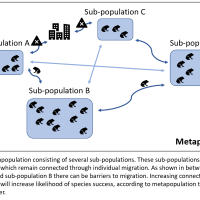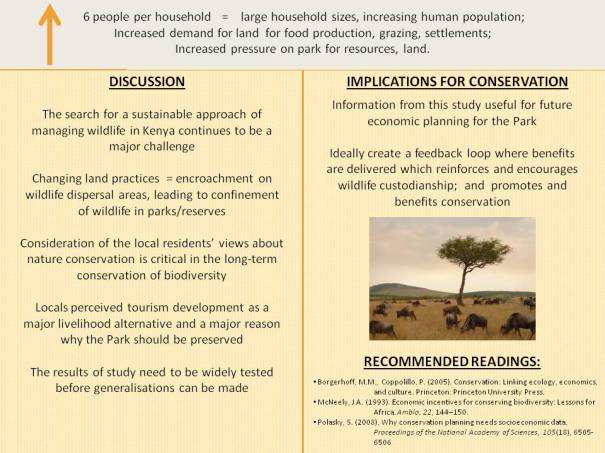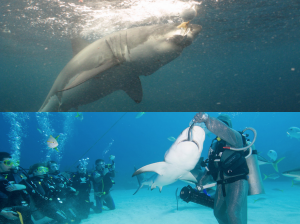Posted: May 1, 2018 | Author: 3Rs in Ecology | Filed under: 2018, ERES525, Research Essay | Tags: conservation, DOC, ecotourism, New Zealand |

Mt Taranaki – Harley Betts
By Daniel Papworth
New Zealand (NZ) has some of the most beautiful landscape in the entire world. However some areas are getting overrun by tourists. Over the past year 3.8 million people visited NZ’s shores[1]. Over half of them explored at least one national park or protected area[2].
NZ’s National parks system aims to preserve the country’s intrinsic worth for the enjoyment of the public. Park land contains “scenery of such distinctive quality, ecological systems, or natural features so beautiful, unique, or scientifically important that their preservation is in the national interest”[3]. The Department of Conservation (DOC) are charged with managing our parks, however they are seriously underfunded having around $20 a hectare of land they manage[4]. As a consequence from over use and lack of resources the beauty of these places may be at risk. Combined with climate change stress in these environments is mounting[5, 6]. Currently under the National Parks Act (1980) DOC is unable to charge for access. Regulation of the number of people visiting these area’s needs to be implemented to conserve them and their beauty.
Travelling abroad, you will almost always be charged to enter a national park. Chris Roberts, CEO of Tourism Aotearoa, says that only half a dozen sites in NZ are in serious need of number management[7]. Shouldn’t we then charge tourists to see these high use sites? Money spent on entry can be directed straight back into the maintenance of these tourist hotspots. The number of people visiting at one time can be monitored and regulated if needed. Another option is a ‘conservation tax’ or ‘nature levy’. When entering NZ international visitors could pay a small sum to be given to DOC for the upkeep of these high-use areas. If 3.8 million people visit a year and each is charged $20 that comes to seventy-six million dollars, nearly a quarter of DOC’s yearly budget. The total cost to visit NZ would then be $50, still cheaper than Australia’s $58-$85 border fee[8].
So why haven’t we used any of these methods yet? The problem is relatively new. Visitor numbers have increased from 2.6-3.8 million in the last five years[9]. In recent years DOC’s budget has reduced, making their job of maintaining these areas and conserving NZ’s endangered species all the more difficult. There is also likely hesitance to the investment for infrastructure. Buildings will need to be erected, people would have to be employed to process visitors. The difficulty of putting infrastructure in place could be avoided with the border tax option. However not every visitor is going to visit a national park, and some may visit multiple. Perhaps this information needs to be collected during the visa process. Or even just a free online booking system, purely for regulation purposes. Personally I feel that New Zealanders take great pride in their natural heritage. We have a certain expectation that these sort of things should free and easy to access. It feels less intrepid when you have to wait in a que to see it, less raw.
Over Easter weekend I had the pleasure of hiking the Northern Circuit in the central North Island. The locals say they cannot believe so many people still come to walk the Tongariro Alpine Crossing. Often commenting that so many come to do it they’re surprised everyone hasn’t already done it. That Easter Sunday over 3000 people walked the crossing. All those people winding their way up the mountain, using the toilets, wearing the track, stressing the fragile alpine environment[10]. Surely people will pay a small fee to experience these kind of areas. They didn’t pay to fly all the way around the globe to turn around at the gate because of a $10 entry fee. Visitors are great for the NZ economy, and these areas should be shared, but the need for number management is increasing.
So should we pay to play? Absolutely. More regulation is needed in these hot-spots for their longevity. Reducing the stress on these areas by having a charge is an opportunity we would be silly not to do. Let’s use tourism to help fund conservation. Let’s keep NZ beautiful.
References
- Statistics New Zealand (2018). Retrieved from https://www.stats.govt.nz/news/annual-visitor-arrivals-up-more-than-1-2-million-in-five-years
- Department of Conservation (2017). International Visitors Survey. Retrieved from http://www.doc.govt.nz/2017-annual-report-factsheets/?report=IVS_exp_by_NPk__2017_08_28_DOC_factsheet_template
- National Parks Act, No 66 (1980). Retrieved from http://www.legislation.govt.nz/act/public/1980/0066/latest/whole.html
- DOC is in desperate need of more funding (May 2017), Newshub. Retrieved from http://www.newshub.co.nz/home/new-zealand/2017/05/jesse-mulligan-doc-in-dire-need-of-more-funding.html
- Scott, D. (2003, April). Climate change and tourism in the mountain regions of North America. In 1st International Conference on Climate Change and Tourism (pp. 9-11).
- Moreno, A., & Becken, S. (2009). A climate change vulnerability assessment methodology for coastal tourism. Journal of Sustainable Tourism, 17(4), 473-488.
- Visitors will keep coming if national park fees introduced (February 2017), Newshub. Retrieved from http://www.newshub.co.nz/home/new-zealand/2017/02/visitors-will-keep-coming-if-national-parks-fees-introduced-industry.html
- New Zealand Green Party (2017). Tourism Levy Policy. Retrieved from https://www.greens.org.nz/policy/cleaner-environment/taonga-levy
- Statistics New Zealand (2018). Retrieved from https://www.stats.govt.nz/news/annual-visitor-arrivals-up-more-than-1-2-million-in-five-years
- Groot, R. (2003). The Tongariro National Park: Are We Loving it to Death? New Zealand Journal of Geography, 115(1), 1-13.
Posted: May 4, 2014 | Author: 3Rs in Ecology | Filed under: 2014, BIOL420, Research Essay | Tags: acoustic, berleying, cage diving, conservation, ecotourism, shark, shark attacks, shark cull |
By Sarah Bezeredi
As more opportunities arise for the public to experience some of nature’s wonders, will it cause these previously unaccustomed species to get dangerously comfortable with human presence? Ecotourism is a growing industry that focuses its conservation efforts on educating the public while engaging them with animals in their natural habitats (Laroche et al. 2007). Shark ecotourism has become an increasingly popular attraction for thrill-seekers within the past decade (Gallagher & Hammerschlag 2011). It provides a range of opportunities, varying from viewing sharks on a boat to hand-feeding them while scuba diving, throughout the world, as seen in Figure 1 (Meyer et al. 2009). Many shark populations are in serious decline as a consequence of exploitation, with 100 million caught annually (Griffin et al. 2008). These animals are especially vulnerable to extinction due to slow life history characteristics, including late sexual maturity and slower growth rates (Gallagher & Hammerschlag 2011). Owing to their role as apex predators (species with few or no predators), sharks help shape the population dynamics of other species (Griffin et al. 2008). Consequently, increased awareness of the conservation issues facing sharks is critical, emphasized by their role in maintaining ecosystem health (Meyer et al. 2009; Griffin et al. 2008).

Figure 1: Globally known shark ecotourism operations. Sourced from: Gallagher & Hammerschlag 2011.
With much of the past research focusing on populations and behavioral changes of sharks due to ecotourism, the scientific world has not yet delved into how these changes could affect shark attack rates. Incidences of attack can strike fear into the public, which opens up the possibility of government initiated shark culls to reduce these attack risks (“WA mulls” 2011; Shadbolt 2014).If research reveals a connection between shark ecotourism and attacks, then shark ecotourism may ultimately not be “ecotourism” and should be modified. This indicates an immediate call for research, examining the possible relationship between attacks and ecotourism and whether alternative practices can be created that reduce risks.
Benefits of Shark Ecotourism
Although, as will be further discussed, shark ecotourism may indirectly promote the killing of sharks, it is as likely to promote its conservation. Ecotourism helps generate an appreciation for these species that may translate into personal connections (Meyer et al. 2009). As a result, it encourages individuals to take part in conservation efforts and redirect the current interest in harvesting these animals to developing other sustainable economic opportunities (Meyer et al. 2009). A single grey reef shark is estimated to be 100 times more valuable alive, through shark ecotourism, than dead (Gallagher & Hammerschlag 2011). As demonstrated, ecotourism can create positive results through promoting conscientious, low impact visitor behavior and providing sustainable economic benefits to local communities, but has the potential to become detrimental.
Reeling the Fish In
Nature is an unpredictable environment that pushes businesses to develop methods aimed at increasing nature’s reliability. In order to maintain a reputable operation, many shark tour companies bait the water with fish-based products, a process called berleying (Bruce & Bradford 2011). The sharks smell the berley, come to investigate and then are kept near the boat/tourists by hand feeding or “teasing” them with the bait on a line, as seen in Figure 2 (Bruce & Bradford 2011) .In previous years, berleying was only done on an irregular basis, compared to 2010, when the numbers indicated a double in the number of days berleying occurred on a regular daily schedule in South Africa (Bruce & Bradford 2011).
Shark Attacks Through Conditioning
An area of research not fully explored is whether shark feeding increases the risk of shark attacks through association of humans with food. This association is thought to be caused by a process termed conditioning (Johnson & Kock 2006). A repeated neutral stimulus, represented as the boat or cage, is followed with the reward (food), creating the response from the sharks to feed (Johnson & Kock 2006). If this happens often enough, after some time the neutral stimulus will be sufficient to produce the response, ultimately termed the conditioned response (Johnson & Kock 2006). Laroche et al. found that regular and consistent berleying can lead to conditioning and altering shark population structure (2007). Studies have examined the conditioning of sharks, which may result in them becoming more comfortable around, and less fearful of, humans (Topelko & Dearden 2009). Numerous examples can be found throughout literature that addresses the issue of conditioned animals such as reptiles, primates, and tigers, becoming increasingly aggressive with humans (Johnson & Kock 2006). Furthermore, the berleying method encourages high concentrations of sharks abnormally grouped together in the pursuit of food (Topelko & Dearden 2009). When sharks are feeding, they are known enter into a state of excitement (Topelko & Dearden 2009). Congregations of sharks while in this heightened state with humans present, may increase the probability of intra and interspecific aggression and attacks (Topelko & Dearden 2009). Evidently, much is to be decided and learnt from the human-shark interactions, and should become a research focus due to the potential for sharks to become conditioned.
Risks to Sharks
With every human constructed interaction, come associated risks to the species and humans. As seen in Western Australia, any inclination that shark attacks are increasing has the possibility to end in a massive turn on this apex predator as a state-wide shark cull (Shadbolt 2014; Woodroffe et al. 2005). Evidence is lacking for this mass cull, as demonstrated in the regular yearly attack rate fluctuations, seen in Figure 3 (“Ichthyology” 2014). Shark ecotourism may not be a direct cause of this culling event, but it emphasizes the importance of understanding the relationship between this growing industry and attacks. Therefore, one must acknowledge the delicate balance between increased conservation efforts made through shark ecotourism and the risk to humans, which in turn is a risk to shark populations. Focus needs to be directed to finding ways to minimize these risk factors while maximizing the benefits to shark conservation.
Research Prioritization Framework
Investigating the influence of shark conditioning to attack rates has been a neglected field of study, partially as a consequence of the time scale difficulties it presents. Due to the possibility of shark ecotourism not producing an immediate effect and more of a long-term behavior change, it is hard to study in the short-term time scale. Therefore, to be studied now, one could examine the history of similar situations or species. A method for studying the change in aggression of sharks could be to use common practices conducted in the past, such as crab fishing, which deposit a similar amount of scraps into the water, as seen in berleying efforts for sharks (Clua et al. 2010). This could reveal shark behavior before ecotourism became a widely accepted activity and help determine whether discarding scraps produced any noticeable changes in shark aggression toward the boats and feed. In addition, aggression and attack rates can be analyzed in areas that have historically had fishing boats present (no humans in water) compared to areas with fishing and cage diving. A study like this could potentially indicate behaviour changes in sharks due to human presence in the water.
Resources should also be invested into developing a tag and monitor project. This can further our understanding of the attack risk by tagging individual sharks that are regularly and rarely found feeding at tour boats. Following this, monitoring their distance from shore would provide insight as to whether individual sharks frequently exposed to the boats and divers were less cautious around busy shorelines than the sharks that rarely fed at the boats.
Additionally, if research reveals that shark ecotourism promotes shark attacks through conditioning from berleying, then procedures should be modified. This may mean that berleying becomes highly restricted to ensure irregularity in the schedule, discouraging conditioning of the sharks. It is clear that the need for international coordination is integral to minimizing negative impacts through ensuring proper measures and policies are being implemented and followed accordingly. Further research into alternative methods of attracting sharks to the boats can also be conducted. A company called Adventure Bay Charters, operated by Matt Waller, is currently using acoustic attraction, which has not been studied in-depth yet. It substitutes the use of berley with playing music underwater, claiming that the sharks are curious enough to venture toward the sound (“Adventure Bay” 2014). Further research into this area can prove to be tremendously insightful into providing a safer alternative to both sharks and humans.
Tread Lightly Until Further Notice
Shark ecotourism is a rising industry aimed to promote conservation and appreciation while maintaining an economic advantage to the local communities. But what if the very thing that was meant to conserve sharks was indirectly causing their demise? Evidence indicates sharks have the capacity to become conditioned. As a result, shark ecotourism has the potential to create an association of humans with food, ending in increased attacks. When feeling threatened, human instinct causes a defensive response, which has the capacity to substantially affect a species population (Woodroffe et al. 2005). Thus, ironically, shark ecotourism may actually condemn the very species it intends to protect. This gap in science needs to be filled to prevent further damage. Research into the current and long-term behavioral change of sharks should be a priority, along with creating an industry with less impact on the ecosystem. Through expanding our knowledge about how increased exposure of humans to sharks will affect their innate actions and associations, ecotourism operators will be able to adjust their operations accordingly. Humans have already taken the oceans from sharks. The least we can do is try and keep the few left safe.
For further information on the importance of conserving sharks: http://oceana.org/sites/default/files/o/fileadmin/oceana/uploads/Sharks/Predators_as_Prey_FINAL_FINAL.pdf
For further reading on the Western Australia example: http://www.cnn.com/2014/01/27/world/asia/australia-sharks/.
For more information regarding Adventure Bay Charters: http://adventurebaycharters.com.au/
References
Adventure Bay Charters: Swim with Great Whites. (2014). Retrieved 27 April 2014 from http://adventurebaycharters.com.au/shark-cage-diving-with-great-whites/
Bruce, B. & Bradford, R. (2011). The effects of berleying on the distribution and behavior of white sharks, Carcharodon carcharias, at the Neptune Islands, South Australia. Hobart, Tasmania: CSIRO Marine and Atmospheric Research.
Dicken, M, Hosking, S. (2009). Socio-economic aspects of the tiger shark diving industry within the Aliwal Shoal Marine Protected Area, South Africa. African Journal of Marine Science 31, 227–232. DOI:10.2989/AJMS.2009.31.2.10.882.
Gallagher, A. & Hammerschlag, N. (2011). Global shark currency: the distribution, frequency, and economic value of shark ecotourism. Current Issues in Tourism 14(8), 797-812, DOI: 10.1080/13683500.2011.585227.
Griffin, E., Miller, K., Freitas, B. & Hirshfield, M. (2008). Oceana: Predators as Prey: Why Healthy Oceans Need Sharks. Washington, DC.
Ichthyology at the Florida Museum of Natural History: International Shark Attack File. (2014). Retrieved 27 April 2014 from http://www.flmnh.ufl.edu/fish/sharks/statistics/statsw.htm
Johnson, R. & Kock, A. (2006). South Africa’s white shark cage-diving industry: is there cause for concern?Finding a Balance: White Shark Conservation and Recreational Safety in the Inshore Waters of Cape Town, South Africa; Proceedings of a Specialist Workshop. WWF South Africa Report Series-2006/Marine/001. 40–59.
Laroche, R., Kock, A., Dill, L. & Oosthuizen, W. (2007) Effects of provisioning ecotourism activity on the behavior of white sharks Carcharodon carcharias. Marine ecology Progress Series 338, 199-209. DOI: 10.3354/meps338199.
Matthew Meier Photography. (2011). Retrieved 4 May 2014 from http://matthewmeierphoto.photoshelter.com/image/I0000VCHDocrP9Ho
Meyer, C., Dale, J., Papastamatiou, Y. ,Whitney, N., & Holland, K. (2009). Seasonal cycles and long-term trends in abundance and species composition of sharks associated with cage diving ecotourism activities in Hawaii. Environmental Conservation 36 (2), 104–111. DOI:10.1017/S0376892909990038.
Shadbolt, P. (2014). Shark culling begins in Western Australia, angering conservationists. Retrieved on 3 May 2014 from http://www.cnn.com/2014/01/27/world/asia/australia-sharks/.
Topelko, K. & Dearden, P. (2005). The Shark Watching Industry and its Potential Contribution to Shark Conservation. Journal of Ecotourism 4(2), 108-128. DOI:10.1080/14724040409480343.
WA mulls shark culls after fatal attack in ABC News. (2011). Retrieved 3 May 2014 from http://www.abc.net.au/news/2011-10-23/wa-mulling-shark-culls-after-death/3595624
White Shark Conservation Trust: conservation through research, understanding and education. (2014). Retrieved 27 April 2014 from http://whitesharkconservationtrust.org/2014/03/02/permits-to-be-required-for-cage-diving-operations/
Woodroffe, R., Thirgood, S. & Rabinowitz, A. (2005) The impact of human- wildlife conflict on natural systems. In People and Wildlife: Conflict or Coexistence, 13-26. New York, United States: Cambridge University Press.










